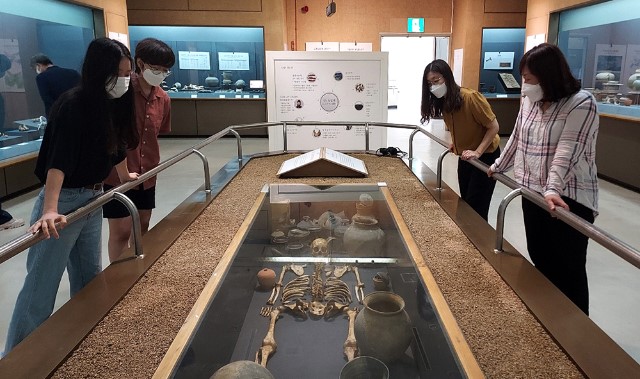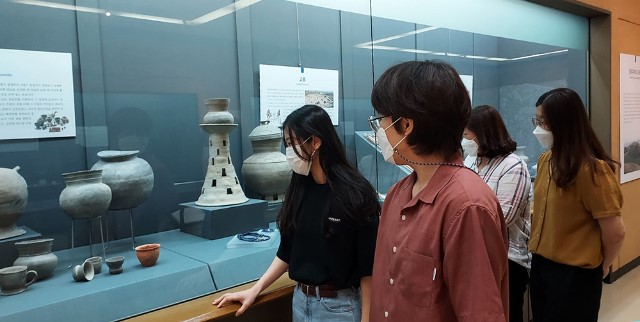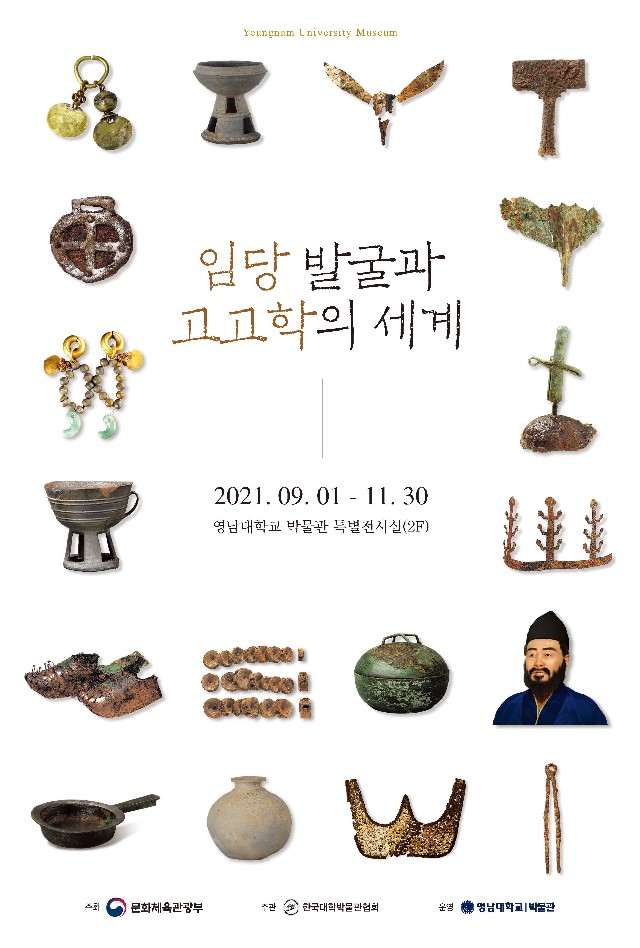Global attention on 40 years of research on the ‘Imdang Remains’ in the ancient Gyeongsan region
Inter-disciplinary research in history, anthropology, medicine, and natural science sectors
Videos containing important contents from the special exhibit to be produced as a creative animation and unveiled via YouTube
[September 1, 2021]
YU (President CHOI Oe-chool) will hold the ‘Imdang Excavation and World of Archeology’ special exhibit (9/1 - 11/30/2021) that explains the society such as the life and death of people in ancient Gyeongsan through an archaeological approach as the second semester begins.
YU Museum has continuously excavated and examined historical site 516 Gyeongsan Imdan-dong and the Joyeong-dong Ancient Tombs since 1982. Various investigative institutes also participated since the 1990s for full-fledged investigations, and massive excavations were conducted in Imdang-dong and its vicinity. In result, it was possible to procure huge amounts of archaeological materials making it possible to restore the ancient society of the Gyeongsan area. Excavations in the Imdang area are still ongoing.
It has been 40 years since YU Museum began excavations at Imdang Remains, and as inter-disciplinary research encompassing archeology, history, anthropology, medicine, and natural science, work on restoring the daily life of people in ancient Gyeongsan began in earnest. In the center of this was YU Museum. In particular, the research achievements based on the latest DNA analysis methods received global attention.
This special exhibit summarized and introduced various research achievements made up until recently focusing on the excavation of the Imdang ancient tomb remains that our museum has led for a long time. It arranged the features and meaning of various artifacts such as iron items and accessories, as well as earthenware that is always a part of archaeological studies. Furthermore, it will provide a comprehensive introduction on the analysis and research achievements of ancient human skeletons and animal remains that were conducted over the past few years. Various analysis results made possible by the latest technologies are introduced .
.
More importantly, the main contents of the special exhibit will be produced in six videos and two creative animations for people having difficulty visiting due to COVID-19 and it will be revealed through various online media such as the YU YouTube channel every Wednesday starting on September 8.
YU Museum Director Jung In-sung, who oversaw this exhibit, said, “YU Museum is striving to hold exhibits that clarify its identity as a university museum of the region. In-depth research was conducted on the ancient human skeletons and natural artifacts of the ancient Imdang remains through this project for investigating Imdang Remains that represent Apdok. This is quite rare anywhere in the world. The achievements made here will contribute greatly in researching the living history of the ancient people of Apdok.” He added, “I hope that many people will visit YU Museum or see the special exhibit in cyberspace.”
This special exhibit was held with funding from the ‘2021 Korean University Museum Promotion Support Project’ hosted by the Korean Association of University Museums and sponsored by the Ministry of Culture, Sports and Tourism. YU Museum has also been conducting the ‘Apdok Cultural Heritage Research Utilization’ project sponsored by Gyeongsangbuk-do and Gyeongsan for three years since 2019. Basic analysis of ancient skeletons stored at the museum was conducted, and the study is being carried out by applying the latest science technologies such as DNA analysis by collaborating with various research institutes both in and outside of Korea. It has become possible to get a more vivid look into the lifestyles of the people of Apdok. This year, analysis on the Imdang-dong animal remains collected by the YU Museum will begin in earnest.












